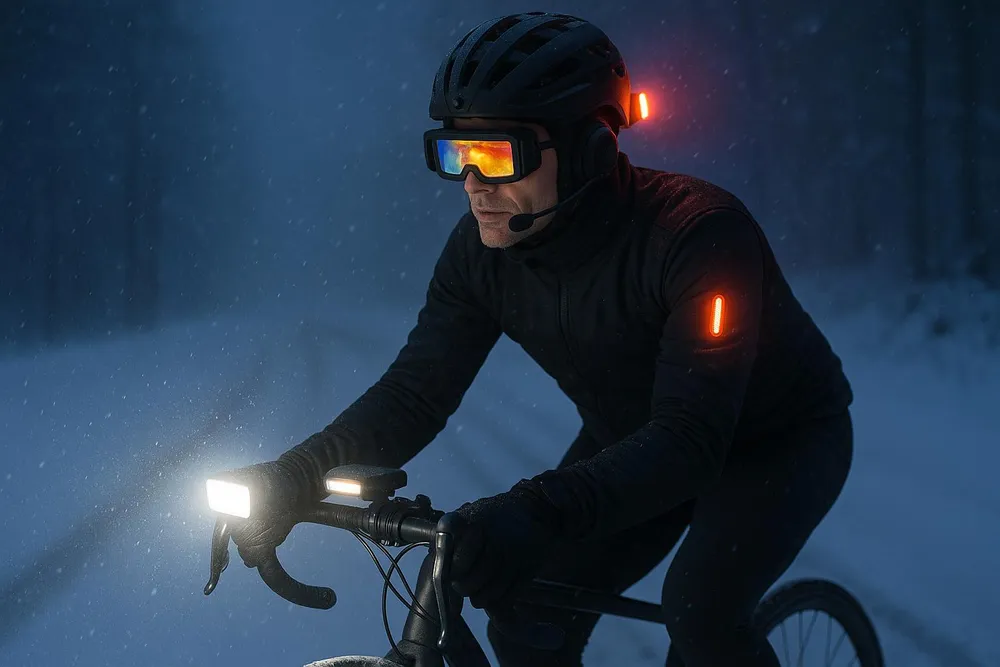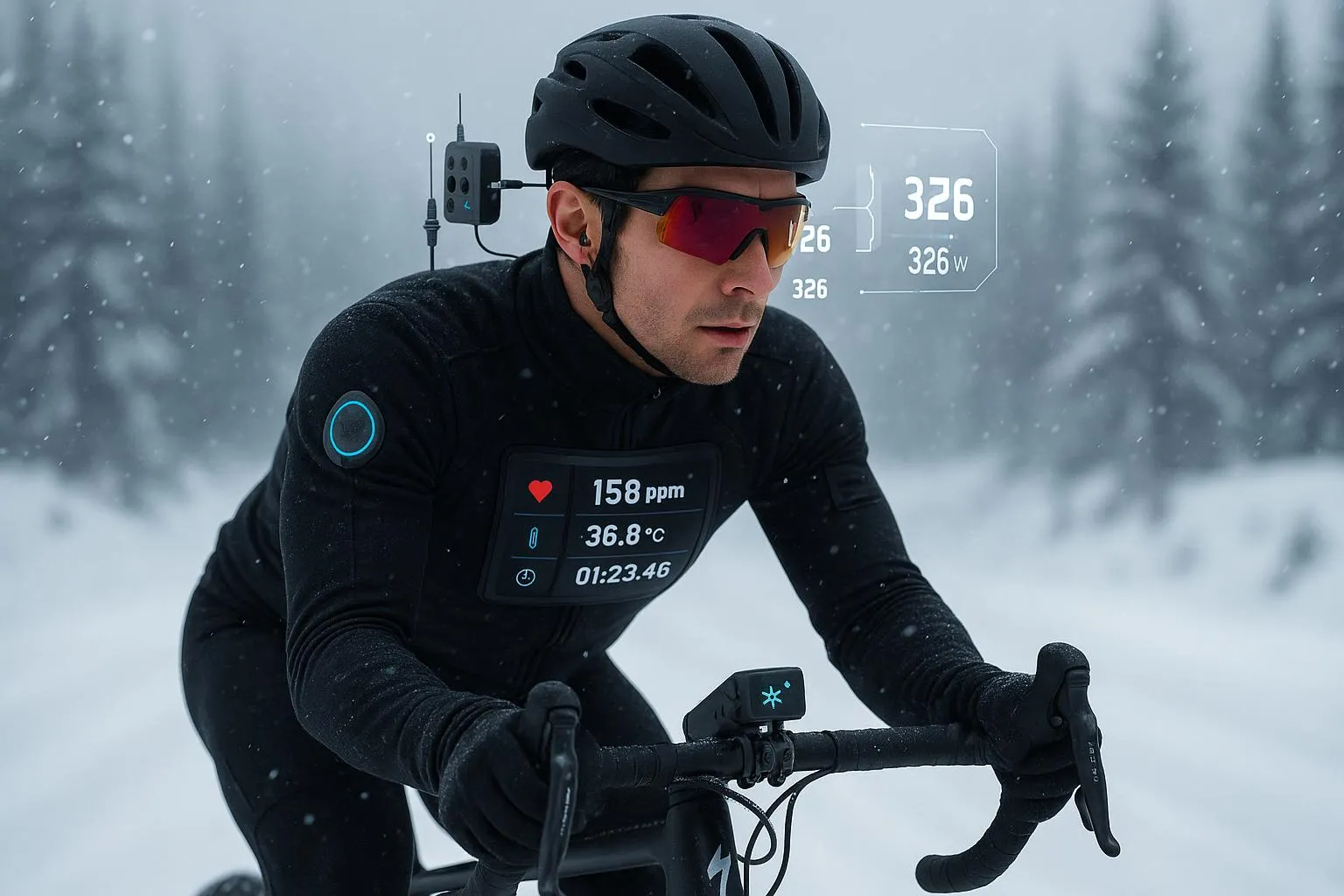As autumn transitions into winter across the Northern Hemisphere, cyclists worldwide are preparing for the challenges that cold weather brings to their beloved sport. The year 2025 has ushered in a remarkable revolution in winter cycling technology, transforming how riders approach cold-weather preparation and performance. From intelligent heated clothing systems to advanced bike maintenance protocols, the landscape of winter cycling has evolved dramatically, offering unprecedented comfort, safety, and performance optimization for cyclists who refuse to let freezing temperatures sideline their passion.
The winter cycling preparation technology revolution represents more than just incremental improvements in existing gear. It embodies a fundamental shift toward intelligent, data-driven solutions that adapt to environmental conditions in real-time, providing cyclists with professional-grade tools that were once exclusive to elite athletes and research facilities. This technological transformation is democratizing winter cycling excellence, making it accessible to recreational riders while pushing the boundaries of what’s possible for competitive cyclists who train year-round in challenging conditions.
The Smart Heated Gear Revolution
The cornerstone of modern winter cycling preparation lies in the development of sophisticated heated clothing systems that go far beyond the basic heated jackets of previous generations. Today’s smart heated gear represents a convergence of advanced materials science, battery technology, and intelligent control systems that create a personalized microclimate for each rider [1]. These systems utilize ultra-thin heating elements woven directly into high-performance fabrics, creating zones of targeted warmth that respond dynamically to both external temperature conditions and the rider’s physiological state.
The most advanced heated cycling jackets now incorporate multiple heating zones with independent temperature control, allowing riders to customize warmth distribution based on their specific needs and riding intensity. These systems feature integrated sensors that monitor ambient temperature, wind speed, and even the rider’s core body temperature through biometric feedback, automatically adjusting heating levels to maintain optimal comfort without overheating [2]. The battery technology powering these systems has evolved to provide up to twelve hours of continuous operation on a single charge, with rapid charging capabilities that can restore full power in under two hours.
Smart heated gloves represent another breakthrough in winter cycling comfort technology. Unlike traditional heated gloves that provide uniform warmth, the latest generation features fingertip-specific heating elements that maintain dexterity for gear shifting and brake operation while preventing the numbness that can compromise safety in cold conditions [3]. These gloves integrate seamlessly with smartphone apps, allowing riders to adjust temperature settings without removing their hands from the handlebars, and some models even feature gesture recognition technology that can control other connected cycling devices.
The innovation extends to heated cycling shoes and insoles, which address one of the most challenging aspects of winter riding: maintaining foot warmth and circulation during long rides. Advanced heated insoles now incorporate pressure-sensitive heating elements that increase warmth in areas experiencing reduced blood flow, while maintaining breathability to prevent moisture buildup that can lead to frostbite risk [4]. These systems can be controlled via smartphone apps or integrated cycling computers, providing real-time feedback on foot temperature and circulation status.

Advanced Winter Bike Maintenance Systems
Winter cycling preparation extends far beyond personal comfort to encompass sophisticated bike maintenance protocols that ensure optimal performance in harsh conditions. The 2025 cycling season has introduced revolutionary maintenance technologies that automate many aspects of winter bike care while providing unprecedented insights into component health and performance degradation in cold weather conditions.
Smart bike maintenance systems now incorporate Internet of Things (IoT) sensors throughout the bicycle’s critical components, monitoring everything from chain lubrication levels to brake pad wear in real-time [5]. These sensors can detect the subtle changes in component performance that occur as temperatures drop, alerting riders to maintenance needs before they become critical failures. The system’s artificial intelligence algorithms learn from each ride, building a comprehensive understanding of how specific components respond to various winter conditions and predicting optimal maintenance schedules.
The development of temperature-adaptive lubricants represents a significant advancement in winter cycling maintenance technology. These specialized lubricants utilize phase-change materials that adjust their viscosity based on ambient temperature, ensuring optimal chain performance whether riding in mild autumn conditions or sub-zero winter temperatures [6]. Smart lubrication systems can automatically dispense the appropriate amount of lubricant based on riding conditions, eliminating the guesswork that has traditionally plagued winter bike maintenance.
Corrosion prevention has evolved beyond simple protective coatings to encompass active protection systems that monitor and respond to environmental threats in real-time. Advanced protective films now incorporate self-healing properties that can repair minor scratches and abrasions automatically, while embedded sensors detect the early stages of corrosion formation and alert riders to take preventive action [7]. These systems are particularly valuable for cyclists who regularly encounter road salt and other corrosive substances during winter riding.
Cold Weather Performance Optimization
The science of cold weather cycling performance has advanced dramatically with the introduction of sophisticated monitoring and optimization systems that help riders maintain peak performance despite challenging environmental conditions. Modern performance optimization technology recognizes that cold weather affects every aspect of cycling physiology, from muscle function and cardiovascular response to cognitive performance and reaction times.
Advanced performance monitoring systems now incorporate environmental sensors that measure not just temperature, but also humidity, wind speed, air pressure, and even air quality metrics that can impact respiratory function during cold weather exercise [8]. These systems integrate with wearable technology to provide real-time feedback on how environmental conditions are affecting the rider’s physiological response, enabling dynamic adjustments to effort levels, hydration strategies, and thermal management.
The development of cold-weather specific training protocols has been revolutionized by artificial intelligence systems that analyze vast datasets of winter cycling performance to identify optimal training strategies for different environmental conditions. These AI coaches can recommend specific warm-up routines, interval structures, and recovery protocols that maximize performance while minimizing the risk of cold-related injuries [9]. The systems learn from each rider’s individual response patterns, creating increasingly personalized recommendations that account for factors such as cold tolerance, fitness level, and specific performance goals.
Nutritional optimization for cold weather cycling has evolved to incorporate real-time metabolic monitoring that tracks how cold exposure affects energy expenditure and nutrient utilization. Smart nutrition systems can recommend specific fueling strategies that account for the increased caloric demands of cold weather riding while ensuring optimal hydration despite reduced thirst sensation in cold conditions [10]. These systems integrate with heated hydration systems that maintain fluid temperature and can even add electrolytes automatically based on sweat rate and environmental conditions.
Winter Safety Technology Innovations
Safety technology for winter cycling has undergone a remarkable transformation, incorporating advanced visibility systems, collision avoidance technology, and emergency response capabilities specifically designed for the unique challenges of cold weather riding. The reduced daylight hours and challenging weather conditions of winter cycling demand sophisticated safety solutions that go far beyond traditional lighting and reflective gear.
Smart lighting systems now incorporate adaptive brightness technology that automatically adjusts light output based on ambient conditions, time of day, and riding speed [11]. These systems feature multiple beam patterns optimized for different winter conditions, from focused high-intensity beams for clear night riding to wide-angle flood patterns for navigating in snow or fog. Advanced systems can even communicate with other cyclists and vehicles through vehicle-to-everything (V2X) technology, broadcasting the rider’s position and intentions to nearby traffic.
The integration of thermal imaging technology into cycling safety systems represents a significant advancement in winter riding safety. Thermal cameras can detect pedestrians, animals, and vehicles that might be obscured by snow, fog, or darkness, providing early warning of potential hazards [12]. These systems can be integrated with smart helmets or handlebar-mounted displays, providing real-time thermal imaging overlays that enhance the rider’s situational awareness in challenging conditions.
Emergency response technology has evolved to address the specific risks associated with winter cycling, including hypothermia, frostbite, and accidents in remote areas where rescue might be delayed by weather conditions. Advanced emergency beacons now incorporate multiple communication technologies, including satellite messaging, cellular connectivity, and mesh networking capabilities that can maintain communication even in areas with poor cellular coverage [13]. These systems can automatically detect crashes or medical emergencies and initiate rescue protocols while providing real-time location tracking and vital sign monitoring to emergency responders.

Integration with Indoor Training Systems
The boundary between outdoor winter cycling and indoor training has become increasingly blurred with the development of sophisticated integration systems that allow seamless transitions between outdoor and indoor training environments. Modern indoor training platforms now incorporate real-time weather data and environmental simulations that can replicate the exact conditions cyclists will encounter during their next outdoor ride.
Smart trainers equipped with environmental simulation capabilities can adjust resistance patterns to match the increased effort required for cold weather riding, including the effects of wind resistance, rolling resistance changes due to temperature, and even the biomechanical adjustments riders make in response to cold conditions [14]. These systems can simulate specific winter routes with accurate temperature, wind, and precipitation data, allowing riders to practice their winter riding strategies in a controlled environment.
The integration of virtual reality technology with indoor training systems has created immersive winter cycling experiences that help riders maintain their cold weather skills and mental preparation during periods when outdoor riding is not possible. Advanced VR systems can simulate the visual and auditory cues associated with winter riding, including reduced visibility conditions, wind noise, and the unique challenges of navigating snow-covered terrain [15].
Future Developments and Emerging Technologies
The winter cycling preparation technology landscape continues to evolve rapidly, with emerging technologies promising even more sophisticated solutions for cold weather riding challenges. Research into advanced materials science is yielding new fabric technologies that can provide superior insulation while maintaining breathability and moisture management properties that surpass current synthetic and natural materials.
Nanotechnology applications in winter cycling gear are showing promising results in laboratory testing, with nanofiber insulation materials that can provide exceptional warmth-to-weight ratios while incorporating self-cleaning and antimicrobial properties [16]. These materials could revolutionize winter cycling clothing by eliminating many of the maintenance challenges associated with technical winter gear while providing superior performance in extreme conditions.
The development of predictive weather integration systems represents another frontier in winter cycling technology. These systems combine hyperlocal weather forecasting with individual rider performance data to provide personalized recommendations for optimal riding windows, route selection, and gear choices [17]. Advanced systems can even pre-condition heated gear and bike systems based on predicted weather conditions, ensuring optimal performance from the moment riders begin their journey.
Conclusion
The winter cycling preparation technology revolution of 2025 represents a fundamental transformation in how cyclists approach cold weather riding. From intelligent heated gear systems that provide personalized climate control to advanced maintenance technologies that ensure optimal bike performance in harsh conditions, these innovations are making winter cycling more accessible, comfortable, and safe than ever before.
The integration of artificial intelligence, advanced materials science, and sophisticated sensor technologies has created a new paradigm for winter cycling that extends far beyond traditional approaches to cold weather preparation. These technologies not only enhance the immediate riding experience but also contribute to long-term performance development and safety awareness that benefits cyclists year-round.
As these technologies continue to evolve and become more accessible to recreational cyclists, the barriers to winter cycling participation continue to diminish. The result is a growing community of year-round cyclists who can maintain their training and enjoyment of the sport regardless of weather conditions, supported by technology that adapts to their needs and enhances their capabilities in ways that were unimaginable just a few years ago.
For cyclists considering embracing winter riding or looking to upgrade their cold weather preparation strategies, the current generation of winter cycling technology offers unprecedented opportunities to maintain comfort, safety, and performance throughout the challenging winter months. The investment in these advanced systems pays dividends not only in immediate riding comfort but also in the development of year-round cycling skills and fitness that enhance performance in all seasons.
For more insights on cycling and technology, explore our comprehensive guides on Smart Cycling Technology Revolution, Cycling Recovery Technology Revolution, GPS Safety Technology Revolution, and Advanced Cycling Technology.




